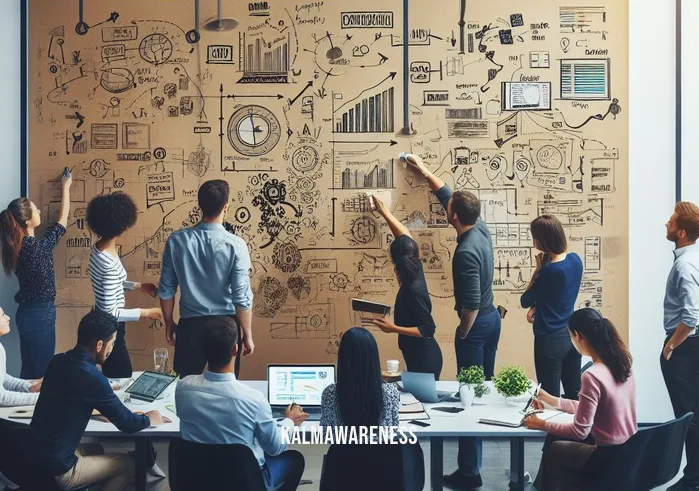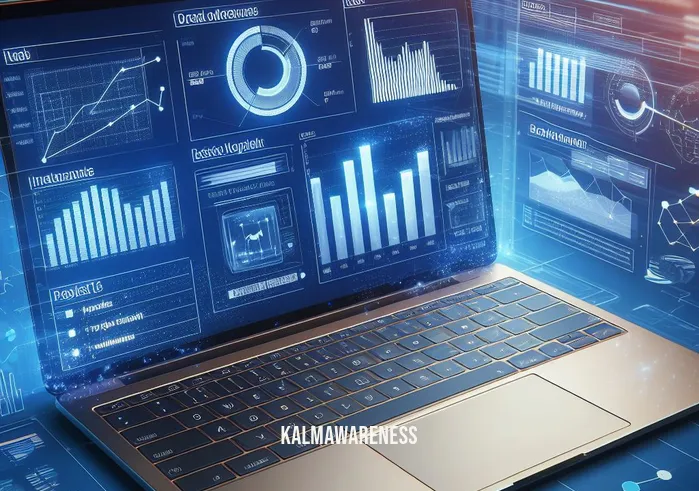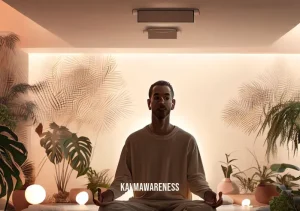The Notebook Monologue: The Power of Inner Reflection
In the vast universe of human experience, there lies a special space reserved for introspection and self-understanding. The notebook monologue represents a profound journey into the depths of our own minds, tapping into the potent energies of self-reflection, inner dialogue, personal storytelling, creative expression, and writing therapy. Today, we venture into the initial exploration of this theme, setting the foundation for an enriching expedition in the subsequent chapters.
The Self as Seen and Unseen
Have you ever paused to truly see yourself? Many of us stand before the mirror daily, adjusting our attire, checking for blemishes, or simply giving ourselves a reassuring smile before stepping out into the world. But beyond that superficial interaction, when you look in the mirror, what do you see?. Is it merely a reflection of your physical form, or does it delve deeper into the essence of who you truly are?
For some, that mirror showcases an image imbued with self-doubt. They wake up one morning and don’t recognize the man in the mirror, questioning their identity and the paths they’ve chosen. For others, this mirror serves as a beacon of self-awareness, allowing them to proclaim with conviction, “I am a mirror”.
Understanding Emotional Maturity
It’s crucial to consider the concept of emotional maturity as we navigate this introspective journey. Many grapple with the persistent question, “Am I emotionally mature?” or sometimes even face the flip side, wondering if they might be emotionally immature. These questions, although daunting, can serve as a compass directing us towards deeper self-awareness.
However, it’s essential to avoid falling into the trap of self-blame. Knowing the definition of a blamer helps us steer clear of self-deprecating behaviors and instead channel our energies towards genuine self-growth.
Meditation: A Tool for Inner Dialogue
A plethora of thinkers, from ancient sages to modern philosophers, have extolled the virtues of meditation. Bruce Lee, a man known for his physical prowess, was equally dedicated to cultivating a strong mind. Byron Katie and her meditation practices are another testament to the power of inner dialogue.
Meditation allows us to engage in an intimate conversation with ourselves. It grants us the serenity to access the wisdom of Buddha’s quotes about self and to introspect on profound questions like, “Who am I, Lord, that you are mindful of me?”. This practice becomes a bridge to understanding our emotions, leading us to the beneficial realms of emotional awareness meditation.
Storytelling: The Art of Expressing the Self
Every person carries a myriad of stories within them. We continually author tales about our experiences, dreams, fears, and aspirations. Personal storytelling, thus, isn’t just an act of sharing; it’s an act of self-reclamation. Alex Elle’s ‘A Note to Self’ is a remarkable example of how articulating our stories can be both a therapeutic and enlightening process.
A Glimpse Ahead
As we progress on this captivating journey, it becomes evident that to truly understand ourselves, we must both reflect and express. The notebook monologue isn’t merely words on a page—it’s the melody of our hearts, the whispers of our souls, and the tapestry of our lives. With the tools of meditation, self-awareness, and storytelling, we embark on a transformative quest that promises profound insights and healing.
Intrigued? Eager to delve deeper into this exploration of the self? Then join us in the next chapter, where we’ll further unravel the intricacies of the notebook monologue and its profound impact on our lives. Your journey of introspection and enlightenment awaits. Continue reading.

The Transformative Power of the Notebook Monologue
The notebook monologue isn’t merely a reflection of our internal thoughts; it’s a transformative tool that bridges the gap between introspection and action. As we delve further into its profound implications, we unveil layers of understanding, shedding light on its varied aspects.
Benefits of Engaging in a Notebook Monologue
Engaging in consistent dialogue with oneself can bring about significant changes in perspective and emotional health. Let’s list down some notable benefits:
Self-awareness Enhancement: A notebook monologue paves the way for recognizing our intrinsic feelings and thought patterns. By penning down these reflections, we become more attuned to our internal state. Such self-awareness can lead us to resources like the daily meditations from the journey, enriching our understanding further.
Cathartic Release: Jotting down personal stories and feelings can be immensely liberating, similar to the relief one feels when discussing with a confidante.
Creativity Stimulation: Diving deep into personal narratives stimulates the creative juices, allowing for novel ideas and perspectives to surface.
Solution Mapping: Confronting our issues head-on within the monologue can help in chalking out potential solutions, much like the reflection one might experience during a chakra garganta meditation.
Cultivating Gratitude: Pausing to contemplate and journal about aspects of life we’re thankful for can lead to a more appreciative mindset. A pertinent query to muse on would be, “What are you thankful for about your apoise?”
Varieties of Notebook Monologues
The beauty of this tool lies in its versatility. A notebook monologue can take on various forms, adapting to the writer’s emotional state and intent. The table below offers a snapshot of its multifaceted nature:
| Type of Monologue | Description | Potential Outcome |
|---|---|---|
| Emotional Exploration | Delving deep into feelings and triggers | Enhanced emotional intelligence |
| Future Projection | Imagining future scenarios or ambitions | Goal setting and visualization |
| Past Recollection | Reflecting on bygone events or experiences | Closure and learning |
| Inspirational Quotes | Gathering sayings that resonate | Motivation and perspective |
| Brené Brown’s Two-word Check-in | Simplifying feelings into two words | Clarity and succinct expression |
Narratives that Change the World
The sheer magnitude of personal narratives can be world-altering. Stories of redemption, love, loss, and triumph echo across the pages of history. But it’s not just the grand tales; even the subdued chronicles of daily struggles carry immense weight. Such narratives, when shared, resonate with countless souls, just like the tale of the man looking in the mirror sadly, compelling us to look within and connect with our deepest emotions.
A Glimpse into the Next Chapter
While we’ve delved into the essence and types of notebook monologues, the journey ahead promises even more depth. We’ll explore the symbiotic relationship between self-reflection and external expression. How do our internal dialogues shape our interactions with the world? And how can we harness the power of the notebook monologue to foster positive change in our lives?
If these questions intrigue you, then the voyage has just begun. Join us in the next chapter, where we’ll continue unraveling the endless facets of the notebook monologue and its transformative influence. Your path to deeper understanding awaits. Continue reading.

Gleaning Hope from the Notebook Monologue
The power of self-reflection in the notebook monologue not only facilitates introspection but is also a beacon of inspiration. Through its pages, many have found solace, direction, and above all, hope. As we turn our attention to this inspiring facet of the narrative, we uncover stories and quotes that illuminate its potential to uplift spirits.
Harnessing the Spark Within
At times, the act of writing in itself can be cathartic. But, when we revisit our entries, they often echo insights that were initially obscured by the turbulence of emotions. Such was the case for a young woman who faced immense challenges. Drowning in despair, she began penning down her feelings. Years later, when she revisited her writings, she realized they weren’t just laments but signposts that led her to a spiritual awakening. She felt a profound connection to Alex Elle’s “A Note to Self”, realizing the universality of seeking solace through words.
Resonating Quotes of Inspiration
The power of words can be transformative, especially when they echo our deepest sentiments. Here are some quotes that perfectly resonate with the essence of the notebook monologue:
“When you write down your life, every page should contain something no one has ever heard about.” – Anton Chekhov
“In the diary you find proof that in situations which today would seem unbearable, you lived, looked around and wrote down observations, that this right hand moved then as it does today.” – Franz Kafka
“Reflect upon your present blessings, of which every man has plenty; not on your past misfortunes, of which all men have some.” – Charles Dickens
“The act of writing is the act of discovering what you believe.” – David Hare
“Look at everything as though you were seeing it either for the first or last time.” – Betty Smith
Real-Life Sparks from the Notebook
Consider the story of John, a man who felt lost amid life’s chaos. Overwhelmed by a series of misfortunes, he was on the verge of giving up. One fateful day, he stumbled upon an old notebook monologue of his father, who too had faced adversities but had soldiered on, drawing strength from introspection. John’s discovery of this notebook was akin to gazing into a mirror and seeing his father’s resilient spirit reflecting back. He felt an immediate kinship with the sentiment expressed in “When you look in the mirror, what do you see?”
Another instance is of Clara, who battled depression. Feeling isolated in her despair, she began to write daily, crafting a dialogue with her inner self. Over time, her narrative began to shift from pain to healing, mirroring her own journey towards mental well-being. Her personal chronicle bore a striking resemblance to the tales of individuals who once questioned, “Who am I, Lord, that you are mindful of me?”
The Path Forward
While we’ve unearthed the inspiring facets of the notebook monologue in this chapter, our exploration is far from over. The monologue is not just about individual stories but also about collective experiences and shared growth.
As we anticipate the next chapter, be prepared to delve into the broader implications of the notebook monologue. How do these narratives impact our connections with others? How can shared stories bind communities, fostering a sense of belonging and mutual understanding?
Eager to discover more? The tapestry of interconnected tales unfolds in the next chapter, where we explore the ripple effect of personal narratives in the vast ocean of collective human experience. Continue reading to dive deeper.

The Intricacies of the Notebook Monologue
Unraveling the tapestry of the notebook monologue reveals the intricacies of its weave. Just as a symphony comprises varied instruments and notes, the monologue is a confluence of emotions, experiences, and reflections. To truly appreciate its depth, let’s dissect its key elements.
Core Components of the Notebook Monologue
Self-Reflection: Central to the notebook monologue, self-reflection allows for an inner dialogue that sheds light on one’s experiences and emotions. This aligns with the idea presented in Brene Brown’s two-word check-in, encouraging individuals to constantly introspect and acknowledge their feelings.
Storytelling: Personal narratives offer a unique blend of facts intertwined with emotions. They provide a window into the writer’s world, much like the insights gleaned from “Daily meditations from the journey”.
Creative Expression: More than just a record of events, the notebook monologue becomes a canvas for the writer’s creativity. The boundless scope for imaginative expression is akin to the openness of the chakra garganta, symbolizing communication and creativity.
Therapeutic Writing: The act of pouring one’s heart onto paper can be immensely cathartic. It aligns with the concept of writing therapy, where words heal wounds, a notion echoed in the article “If you look in the mirror and don’t like what you see”.
Journey of Growth: Each entry in a notebook monologue represents a step in one’s personal journey, reminiscent of the sentiment, “If I could have this moment for life”.
Why the Notebook Monologue Matters
The value of the notebook monologue isn’t merely in its contents but in the process itself. Here’s a breakdown of its significance:
Mental Clarity: Writing organizes chaotic thoughts, providing a clear perspective, akin to the clarity sought in emotional awareness meditation.
Emotional Outlet: Expressing suppressed emotions can bring relief. This resonates with the feeling of a man looking in the mirror sadly, yearning to release his pent-up emotions.
Empowerment through Expression: Taking control of one’s narrative can be empowering, a sentiment captured in “I am a mirror”, reflecting one’s true self.
Historical Record: The notebook monologue becomes a testament to one’s evolution over time, ensuring that no chapter of life goes unrecorded.
Problem Solving: Writing about challenges can lead to unexpected solutions, mirroring the introspective journey in “We investigated ourselves and found”.
Anticipating the Conclusion
With a deeper understanding of its multifaceted nature, we’re poised to explore the culmination of the notebook monologue’s journey. Beyond its pages lies a world of interpretation, impact, and influence.
The final chapter beckons, promising to knit together the insights we’ve garnered, illuminating the notebook monologue’s place in the larger tapestry of human expression and connection. Join us in the next chapter as we celebrate the symphony of words and emotions. Continue reading for the grand finale.

Reflecting on the Journey of the Notebook Monologue
As we bring our exploration of the notebook monologue to a close, we’re left with a sense of reverence for the depth and breadth of this personal narrative form. It’s a tapestry woven with threads of introspection, creativity, and self-awareness. Let’s take a moment to revisit the pivotal stops on our journey and gather the pearls of wisdom we’ve accumulated.
Revelations and Rediscoveries
From our initial plunge into the essence of the notebook monologue, we recognized its power to foster emotional maturity and its potential to act as a mirror, echoing the sentiment of when you look in the mirror, what do you see? This form of personal storytelling isn’t just a medium of expression but a tool for transformation.
Our deep dive revealed the notebook monologue as a canvas of creative expression, bridging the gap between the inner and outer worlds. Through its pages, we encountered tales of growth, akin to the life philosophies present in Buddha’s quotes about self.
The Road Ahead
The power of the notebook monologue doesn’t end on the last page. It is an ever-evolving narrative that can inspire, heal, and enlighten. Drawing inspiration from Byron Katie’s meditation practices, we understand the infinite potential of introspective writing in shaping our worldviews.
A Heartfelt Thank You
Dear reader, your companionship on this journey has been invaluable. As you move forward, may the insights from our exploration of the notebook monologue guide you in moments of reflection and self-expression. Our heartfelt gratitude for joining us in this introspective venture. Here’s a reminder of our shared journey, daily meditations from the journey, to inspire your own monologues.
Explore More, Discover More
Our expedition may have concluded, but the world of introspection and personal narratives is vast. We invite you to delve deeper into our magazine, revisit the chapters for a refreshing perspective, or embark on new journeys of discovery. Your next insight, revelation, or story might just be a click away.
Dive In and Immerse Yourself:
We’re committed to bringing you more enriching content in our future editions. Till then, cherish the power of words, the solace of introspection, and the magic of the notebook monologue. Keep writing, keep exploring!




